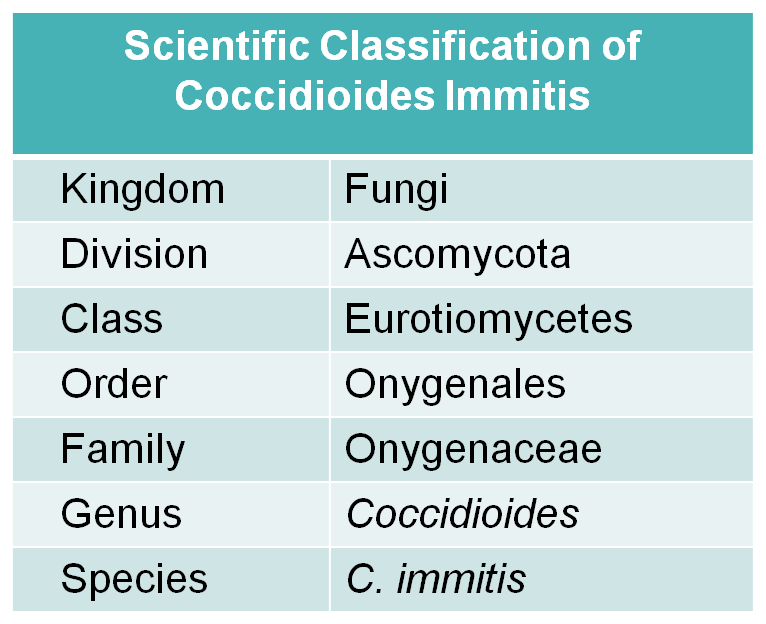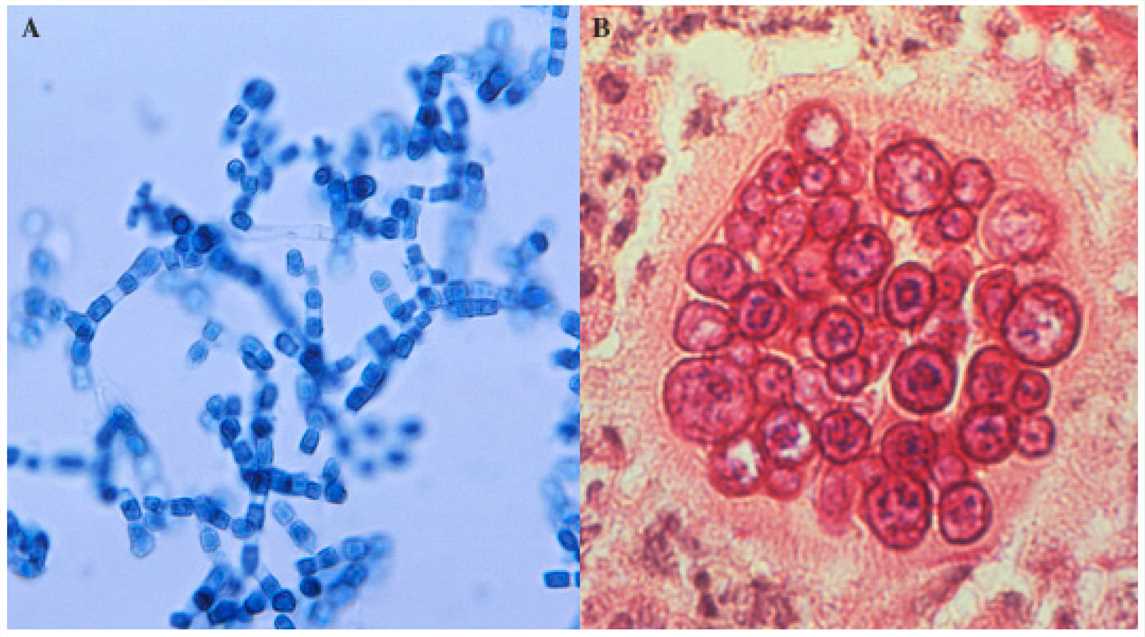Coccidioides immitis
As one important etiologic agent of coccidioidomycosis, Coccidioides Immitis (C. immitis) has attracted increasing attention in the field of fungal diseases. Absolutely, in-depth studies of C. immitis have great benefit for the treatment of coccidioidomycosis. Employing abundant industry knowledge and experience, Creative Biolabs tailors quality drug discovery services to meet the client’s needs in the nosogenesis of Coccidioides Immitis and therapeutic applications of coccidioidomycosis. Now, we focus on the introduction of Coccidioides Immitis here.
Background of Coccidioides Immitis
C. immitis, along with Coccidioides Posadasii (C. posadasii), belongs to the genus Coccidioides. This fungus is a dimorphic pathogen that exists in two distinct forms, saprophytic and parasitic. In the room-temperature, it exists in the soil with hyphal form, while in the body-temperature of its host, the fungus presents spherule form containing endospores and can be transported by the bloodstream to other tissues of the body, particularly to the brain and central nervous system, where they can germinate and grow to cause even more severe disease. It is well acknowledged that the dimorphism helps the fungus to evade the immune system by the changing of the surface antigens of the fungus. C. immitis has a wide range of hosts, including humans, domestic animals, sheep, swine, cattle, horses, wild desert rodents, and other animals.
 Fig.1 Scientific classification of C. immitis.
Fig.1 Scientific classification of C. immitis.
Distribution of Coccidioides Immitis
C. immitis is predominantly distributed in the soil of certain areas, such as the southwestern United States, northern Mexico, and a few other regions in the Western Hemisphere. However, epidemiological studies and case reports have extended the apparent range of this organism. The wide distribution of C. immitis seems to be the result of its saprophytic nature, tolerance for high soil salinity in climates of high temperature and low rainfall.
Structure and Metabolism of Coccidioides Immitis
- Structure: In the hyphal stage of C. immitis, it presents thin, structure-less walls, cytoplasmic membrane, numerous nuclei, elongated mitochondria with both transverse and longitudinal cristae, as well as lipid particles. In the spherule form, C. immitis accumulates a large number of electron transparent polysaccharides, meanwhile, nuclei (each enclosed in a double-layered membrane), mitochondria, and small dense particles appear in the peripheral cytoplasm. Endospores are formed and liberated when the spherule wall breaks.
- Metabolism: It is tested that glucose, mannose, fructose, and glutamate the most efficient substrates metabolized by the endospores and spherules of C. immitis.
 Fig.2 Coccidioides spp. arthroconidia and spherules.1
Fig.2 Coccidioides spp. arthroconidia and spherules.1
Coccidioides Immitis Related Disease
As one of the most virulent of the fungal pathogens, C. immitis may cause coccidioidomycosis, a serious and sometimes fatal disease in otherwise healthy people. The disease usually starts out as a benign, inapparent or mildly severe upper respiratory infection (flu-like symptoms), rarely progress as a chronic severe disseminating fatal mycosis or a systemic disease involving the meninges (lining of the brain), bones, joints, and subcutaneous/cutaneous tissues. Unfortunately, coccidioidomycosis is not easily diagnosed based on the vital signs and symptoms, which are usually vague and nonspecific.
C. immitis has become a perfect model for studying the evolutionary biology of pathogenic fungi. With accumulated experience in antifungal drug discovery, Creative Biolabs spares no effort to offer valuable suggestions and reliable services to support your study. Please feel free to contact us for more details.
Reference
- Kirkland, T.N. The Quest for a Vaccine Against Coccidioidomycosis: A Neglected Disease of the Americas. Journal of Fungi. 2016, 2(4): 34. Distributed under Open Access license CC BY 4.0, without modification.
For Research Use Only.
